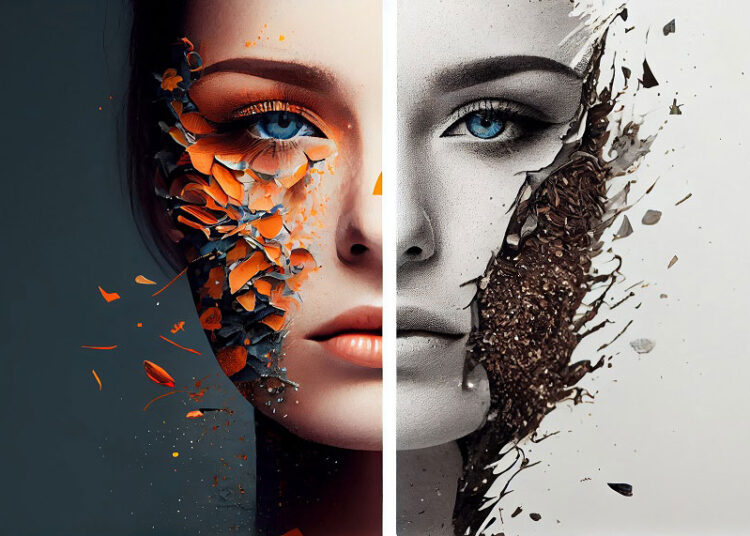Introduction to Dada and its artistic movement
Dada, an avant-garde art movement that emerged in the early 20th century, is known for its unconventional and rebellious approach to art. Rooted in a desire to challenge the established norms and conventions of society, Dada artists sought to disrupt traditional artistic practices and create something entirely new. One of the defining characteristics of Dada art is its emphasis on fusion – the blending of two seemingly disparate characters into one cohesive masterpiece.
The concept of fusion in Dada art
Fusion, in the context of Dada art, refers to the merging of two distinct characters, objects, or ideas to create a new and unique composition. This approach allowed Dada artists to transcend the boundaries of traditional art forms and explore the possibilities of combining seemingly unrelated elements. By fusing different characters, Dada artists aimed to challenge the viewer’s perception and provoke thought and emotion.
The significance of blending two characters in Dada art
The blending of two characters in Dada art holds significant symbolic and conceptual meaning. It represents the breaking down of barriers and the rejection of fixed identities. By merging two distinct characters, Dada artists aimed to blur the lines between reality and imagination, ultimately questioning the very nature of individuality and identity. This concept of fusion also reflects the chaotic and fragmented nature of the modern world, where everything seems to be interconnected and constantly in flux.
Techniques used in fusing two characters in Dada art
Dada artists employed various techniques to achieve the fusion of two characters in their artworks. Collage, a technique popularized by Dadaists such as Hannah Höch and Kurt Schwitters, involved cutting and pasting different images and objects together to create a new composition. This allowed for the juxtaposition of unrelated elements and the creation of unexpected narratives. Another technique used by Dada artists was the use of photomontage, which involved combining different photographs to create a single image. This technique allowed for the blending of different characters and the creation of surreal and dreamlike compositions.
Famous Dada artists known for their fusion artworks
Several Dada artists are renowned for their innovative approach to fusion art. Hannah Höch, a prominent member of the Berlin Dada movement, is known for her photomontage works that fuse different characters and objects in unexpected ways. Her artworks often challenged gender roles and societal expectations, highlighting the absurdity of rigid categorizations. Another influential Dada artist, Max Ernst, explored the concept of fusion through his painting “Two Children Are Threatened by a Nightingale.” In this artwork, Ernst merges the figures of two children with a menacing bird, creating a haunting and surreal composition.
Analysis of specific fusion artworks and their meanings
One of the most iconic fusion artworks in Dada art is Marcel Duchamp’s “L.H.O.O.Q.” In this artwork, Duchamp takes Leonardo da Vinci’s famous painting, “Mona Lisa,” and adds a mustache and beard to her face. By merging the iconic image of the Mona Lisa with a comical and absurd element, Duchamp challenges the notion of high art and questions the authority of established artistic masterpieces.
The influence of Dada’s fusion art on modern and contemporary artists
Dada’s unique approach to fusion art has had a profound influence on modern and contemporary artists. The idea of blending two characters or objects to create something new and unexpected has become a prevalent theme in contemporary art. Artists such as Jeff Koons and Damien Hirst have embraced Dada’s fusion techniques, employing collage and photomontage to create visually striking and thought-provoking artworks. The influence of Dada’s fusion art can also be seen in other art forms, such as literature, music, and film, where the blending of different elements has become a common artistic practice.
How to appreciate and interpret fusion artworks
To fully appreciate and interpret fusion artworks, it is essential to approach them with an open mind and a willingness to explore the unexpected. Fusion art challenges traditional notions of beauty and aesthetics, often blurring the boundaries between different artistic disciplines. By embracing the unconventional and allowing oneself to be immersed in the composition, viewers can uncover hidden meanings and engage in a deeper dialogue with the artwork.
Exhibitions and museums showcasing Dada’s fusion art
Numerous exhibitions and museums around the world showcase Dada’s fusion art, allowing art enthusiasts to experience the unique and groundbreaking works firsthand. The Museum of Modern Art (MoMA) in New York City features an extensive collection of Dada artworks, including pieces by renowned artists such as Marcel Duchamp and Man Ray. The Centre Pompidou in Paris also houses a significant collection of Dada art, offering visitors a comprehensive overview of the movement’s fusion techniques and artistic innovations.
Conclusion: The enduring impact of Dada’s unique approach to fusion art
Dada’s approach to fusion art continues to resonate with artists and art enthusiasts alike. By challenging traditional artistic practices and embracing the concept of fusion, Dada artists opened the doors to new possibilities and paved the way for future artistic movements. The fusion of two characters in Dada art not only creates visually striking compositions but also invites viewers to question established norms and explore the fluidity of identity. Dada’s enduring impact on the art world is a testament to the power of fusion and the transformative nature of artistic expression.



